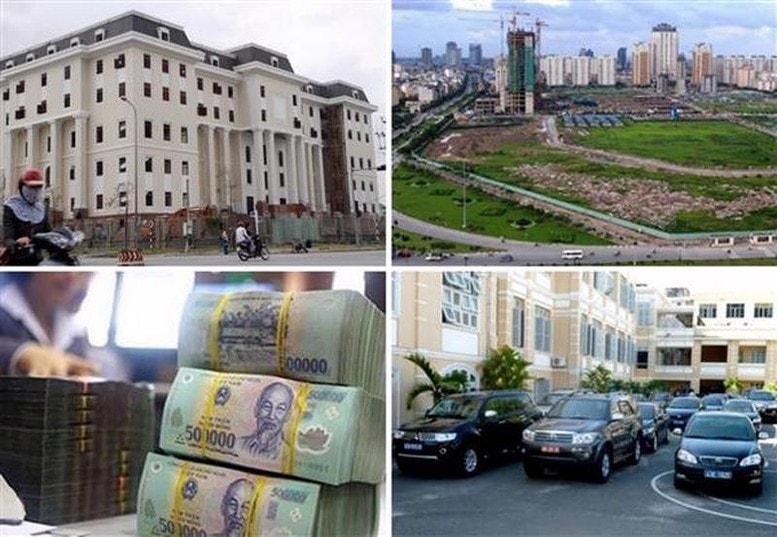Lost or abandoned property whose owner cannot be identified or whose owner does not come to claim it according to the provisions of civil law shall be established as the property of the entire people.

The Government has issued Decree No. 77/2025/ND-CP stipulating the authority and procedures for establishing public ownership of assets and handling assets for which public ownership has been established.
The assets whose ownership rights are established by the entire people as prescribed in this Decree include: assets confiscated according to the provisions of law: confiscated exhibits and means of administrative violations; case evidence, other assets confiscated according to the provisions of the law on criminal matters and the law on criminal procedure (case evidence, assets of convicted persons confiscated).
Ownerless real estate includes: real estate whose owner cannot be identified according to the provisions of civil law; real estate whose owner has renounced ownership of the property according to the provisions of civil law.
Lost or abandoned property includes: lost or abandoned property whose owner cannot be identified or whose owner does not come to receive it according to the provisions of civil law.
Property is an inheritance without an heir, including: property without an heir as prescribed in Article 622 of the Civil Code; property for which the statute of limitations for requesting division of inheritance has expired from the time of inheritance opening but there is no possessor as prescribed in Point b, Clause 1, Article 623 of the Civil Code; the ownership of real estate when one of the joint owners of the real estate renounces his ownership or when this person dies without an heir as prescribed in Clause 4, Article 218 of the Civil Code.
Assets are stockpiled goods kept in port, warehouse and yard areas within customs operation areas according to customs law provisions (stockpiled goods within customs operation areas).
Assets whose ownership is voluntarily transferred by the owner to the State of Vietnam and do not fall under the cases specified in points d, đ, e, g, i and k, Clause 2, Clause 3, Clause 4, Article 1 of this Decree.
The transfer of property ownership to the State of Vietnam is carried out through ministries, ministerial-level agencies, government agencies, other central agencies or local authorities.
In case the transfer has specifically identified the receiving agency, organization or unit; if the receiving agency, organization or unit is under central management, it is determined to be transferred through a ministry or central agency; if the receiving agency, organization or unit is under local management, it is determined to be transferred through the local government.
For assets transferred by foreign experts, contractors, and consultants to the Vietnamese State without specifically identifying the receiving agency, organization, or unit, if the project is centrally managed, it is determined to be transferred through a ministry or central agency; if the project is locally managed, it is determined to be transferred through the local government.
Assets transferred by foreign-invested enterprises are not compensated to the Vietnamese State according to the commitment after the end of the operating period.
Assets invested under the public-private partnership method are transferred to the Vietnamese State under project contracts, including: assets transferred to the Vietnamese State under Build-Operate-Transfer (BOT) contracts, Build-Transfer-Operate (BTO) contracts, Build-Transfer-Lease (BTL) contracts, and Build-Lease-Transfer (BLT) contracts.
Buried, buried, or sunken assets include: Assets discovered or found on the mainland, islands, and seas of the Socialist Republic of Vietnam with sovereignty and jurisdiction, but at the time of discovery or finding, there is no or the owner cannot be identified according to the provisions of law.
The Decree also clearly states the principles for establishing public ownership of assets and managing and handling assets for which public ownership is established.
The establishment of the people's ownership of property as prescribed in this Decree must be made in writing; ensuring the order and procedures as prescribed by law on the basis of protecting the interests of the State and respecting the rights and legitimate interests of relevant organizations and individuals.
In case the agency or person with authority to decide on the establishment of ownership rights of the entire people is also the agency or person with authority to decide on the approval of the asset disposal plan and the unit in charge of asset management is also the agency responsible for establishing the asset disposal plan, the establishment of ownership rights of the entire people over the asset shall be carried out simultaneously with the approval of the asset disposal plan through a Decision of the competent person.
The establishment of the people's ownership of assets and the handling of assets with established people's ownership shall be carried out publicly and transparently; all violations shall be promptly and strictly handled in accordance with the provisions of law. The handling of assets with established people's ownership shall be made into a plan, and the competent authority or person shall decide and approve the plan for handling the assets.
PV (synthesis)